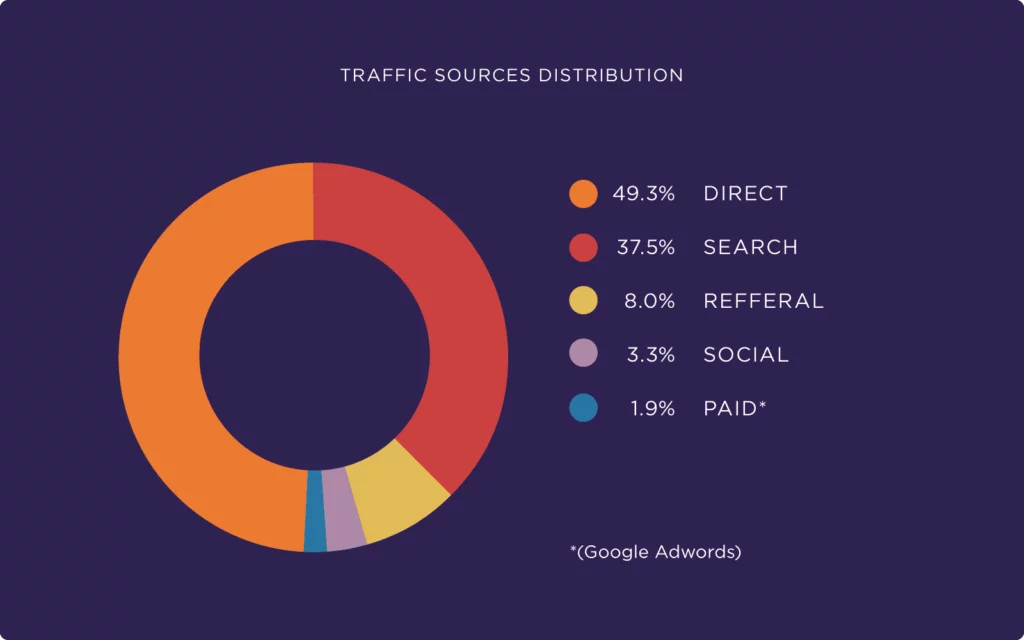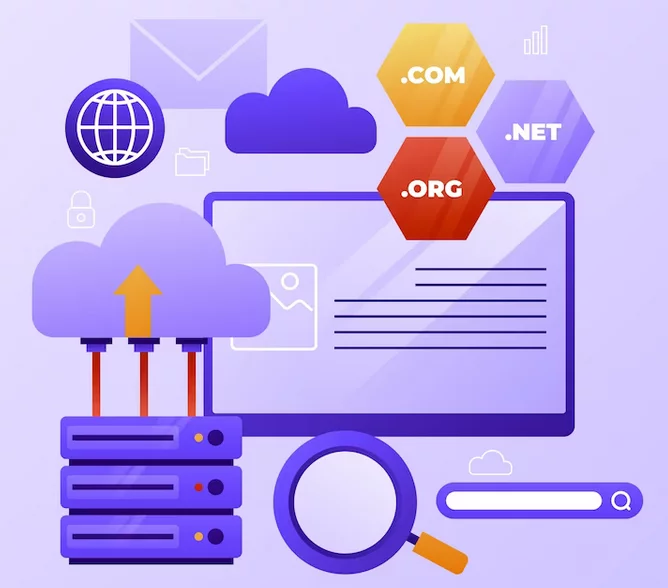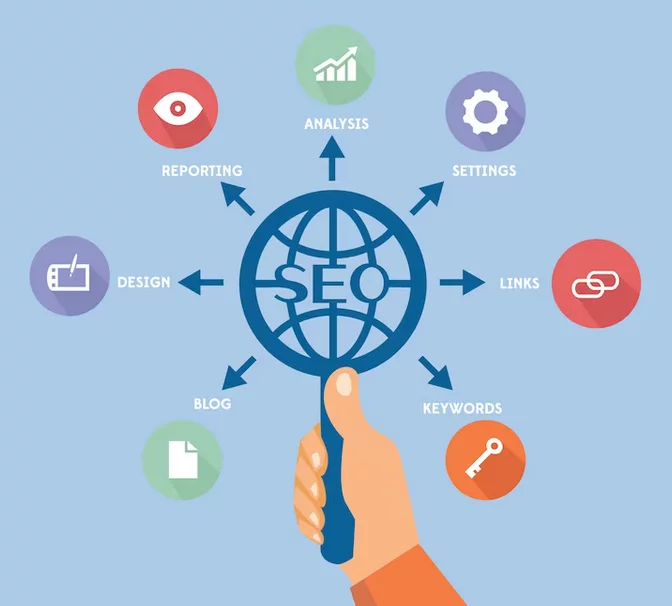In the dynamic era of online commerce, optimizing for search engines is not merely an option; it’s an indispensable driver for business success. As we stride into 2024, staying abreast of cutting-edge SEO strategies is pivotal to thrive in the ever-evolving digital landscape.

Source: Backlinko
These statistics underscore the criticality of SEO in capturing consumer attention, influencing purchasing decisions, and securing a competitive edge.
In this digital era where visibility and user engagement reign supreme, harnessing advanced SEO tactics isn’t just beneficial—it’s imperative for business growth. From AI-integrated optimizations to hyperlocal targeting and leveraging emerging technologies like blockchain, SEO strategies are evolving at a staggering pace.
Strategies to Optimize Ecommerce SEO:
1. Advanced Keyword Research:

Harness the power of long-tail keywords to capture specific buyer intent. Tools like Ahrefs, SEMrush, or Google Keyword Planner enable the identification of these highly targeted phrases. Additionally, delve into semantic SEO by incorporating related terms and synonyms to widen your keyword horizon, attracting a broader audience.
2. Elevate your product pages with meticulous attention to detail:

- Craft Unique Descriptions: Steer clear of duplicate content by creating compelling, one-of-a-kind product descriptions. Avoiding redundancy is key to enhancing SEO.
- Implement Structured Data Markup: Utilize schema markup to furnish search engines with intricate details about your products. This enriched information boosts visibility in search results, attracting more potential customers.
- Enriched Media Integration: Embrace rich media like high-resolution images, engaging videos, and informative infographics. These elements not only enhance user experience but also encourage increased engagement with your products.
3. Mobile Optimization:

As mobile shopping surges, ensuring your e-commerce platform is mobile-responsive is pivotal. Optimize for mobile devices by embracing responsive design, fast-loading pages, and intuitive navigation. Consider tools like Google’s Mobile-Friendly Test to evaluate your site’s mobile performance.
4. Elevate your site’s technical prowess:

- Site Speed Optimization: Enhance loading times by compressing images, leveraging browser caching, and minimizing redundant code. Utilize tools like Google PageSpeed Insights to identify speed bottlenecks.
- XML Sitemaps: Facilitate efficient site indexing by creating and regularly updating XML sitemaps. Plugins like Yoast SEO for WordPress streamline this process.
- Structured URLs: Craft SEO-friendly URLs that incorporate relevant keywords and are easily comprehensible to both users and search engines. Tools such as Screaming Frog SEO Spider assist in analyzing URL structures.
5. Strategically harness content:

- Blogging: Develop SEO-optimized content such as buying guides, product reviews, and industry-relevant articles to attract organic traffic. Platforms like HubSpot offer robust tools for content creation and optimization.
- User-Generated Content: Encourage customer engagement by prompting reviews and ratings. These not only fortify your site’s credibility but also generate fresh content and long-tail keywords. Solutions like Yotpo streamline the collection and showcasing of user-generated content.
6. Strengthening Site Authority:

Elevate your site’s authority by acquiring backlinks from reputable sources. Collaborate with influencers, engage in guest posting on authoritative websites, or foster partnerships within your industry. Utilize tools like SEMrush for thorough backlink analysis and identification of potential high-value linking opportunities.
7. Enhancing Local Visibility:

Boost visibility in local searches by creating location-specific landing pages that integrate targeted local keywords. Consistency is key—ensure Name, Address, Phone number (NAP) details remain uniform across various directories. Plugins like Yoast Local SEO for WordPress streamline and simplify the process of local optimization.
8. Continuous Refinement of Strategies:

Regular Audits: Conduct routine SEO audits to pinpoint and address issues that might impede your site’s performance. Utilize comprehensive tools like Moz’s Site Crawl, offering in-depth site auditing capabilities to identify and resolve potential problems proactively.
Analytics Tracking: Leverage the power of Google Analytics and Google Search Console to closely track various metrics such as traffic patterns, user behavior, and keyword performance. Use these invaluable insights to fine-tune and optimize your SEO strategies continuously.
9. Ensure Site Security and Trust:

An SSL certificate serves as a vital trust signal to both users and search engines, highlighting your commitment to data security, which significantly impacts your site’s SEO.
Let’s Encrypt provides free SSL certificates, ensuring encryption and boosting trustworthiness. These certificates can be obtained through their website or via hosting providers, offering robust security features for your website.
10. Drive Clicks with Engaging Descriptions:

Crafting compelling meta descriptions is crucial for enticing users to click through to your site from search engine results pages. While meta descriptions themselves don’t directly affect rankings, a higher click-through rate (CTR) can positively impact SEO performance.
Yoast SEO for WordPress is a powerful plugin that provides tools and guidance to optimize meta descriptions effectively. It offers insights and suggestions to craft engaging meta descriptions that improve CTR and indirectly impact SEO performance.
11. Retain SEO Value and Rankings:

When handling expired or discontinued product pages, employing 301 redirects is crucial for retaining SEO value and ensuring a seamless user experience. These redirects pass accumulated ranking signals from the old page to the new one.
Redirection in WordPress: This WordPress plugin simplifies the process of setting up and managing 301 redirects. It offers an intuitive interface to create redirects, helping you efficiently manage page transitions while maintaining SEO integrity.
12. Tailor Pages for Higher Rankings:

Approach category pages as unique entities, strategically embedding specific keywords within their content. By focusing on targeted keywords such as “men’s basketball shoes,” you can amplify their potential to rank higher on search engines. Plugins like SEMrush or Ahrefs provide robust keyword research tools to identify and target optimal keywords for category pages.
13. Enhance User Experience and SEO:

Streamline user exploration by implementing category-level navigation across your site. This enhances user experience and facilitates Google’s crawling process, allowing for better indexing and ranking of your category pages. WordPress plugins like Max Mega Menu offer advanced navigation features, making it easier to incorporate category-level navigation on your e-commerce site.
14. Amplify Marketplace Presence:

Boost your products’ visibility by optimizing their presence on leading e-commerce marketplaces like Amazon. Ensure comprehensive listings and effective linking back to your website to drive traffic and augment SEO. Tools such as Helium 10 offer Amazon-centric SEO functionalities, enabling better optimization within these platforms.
15. Craft Captivating Title Tags:

Generate keyword-rich, compelling title tags that entice users and encourage click-throughs. Utilize tools like Yoast SEO for WordPress or SEMrush to optimize and analyze your title tags for better SEO performance.
16. Convert Errors into Opportunities:
Optimize your 404 error pages by redirecting them to relevant sections of your website and providing engaging content or suggestions. WordPress plugins like 404page allow you to customize error pages effectively.
17. Enhance Customer Support and Conversions:

Incorporate live chat functionality to provide real-time assistance, reducing purchase decision time and boosting conversions. Tools like LiveChat or Intercom enable seamless integration of live chat on your e-commerce site, enhancing customer satisfaction and driving sales.
18. Strategic Linking for Engagement:

Strategically incorporating internal links throughout your website is vital. Internal linking guides users to relevant content, enhances user experience, and plays a significant role in SEO.
- Internal Link Juicer for WordPress or SEMrush: Internal Link Juicer streamlines internal linking within WordPress, while SEMrush offers a comprehensive suite of SEO functionalities, including analysis and optimization of internal linking strategies.
19. Customized Call-to-Actions:

Creating tailored CTAs based on promotions or seasonal events is crucial for maximizing conversion rates and user engagement. OptinMonster aids in crafting personalized CTAs, leveraging targeting and segmentation for effective engagement. HubSpot provides a comprehensive suite of marketing tools, including features to optimize and analyze CTAs for better conversion rates.
20. Building Credibility:

Crafting a compelling and informative “About Us” page is fundamental to establish credibility and offer insights into your brand. Elementor or Divi Builder: These plugins simplify the creation of visually appealing About Us pages. Elementor offers a user-friendly drag-and-drop interface, whereas Divi Builder provides various design elements and layouts for customization.
21. Engaging Homepage Suggestions:

Featuring recommended products on the homepage initiates the sales funnel and captures visitor interest through WooCommerce Recommendation Engine. Shopify comes with built-in features to display recommended products on the homepage. Additionally, the WooCommerce Recommendation Engine plugin enhances these suggestions based on user behavior and preferences.
22. Maximize Out-of-Stock Pages:

When items are out of stock, it’s an opportunity to retain potential customers. Utilize plugins like WooCommerce Waitlist, allowing users to subscribe for restock notifications. This not only prevents them from bouncing off your site but also captures leads for future sales. You can customize these notifications to keep customers informed, fostering engagement and potential future purchases.
23. Create a Sense of Urgency:

The psychology of urgency can significantly impact conversions. Tools like Elementor Pro provide countdown timers and templates, prompting visitors to act swiftly. Implementing countdowns for limited-time offers or showcasing stock availability can drive immediate action, boosting sales and urgency-driven purchases.
24. Harness Product Comparison:

Comparing products addresses user queries effectively. Plugins like AAWP (Amazon Affiliate WordPress Plugin) help in creating comprehensive product comparison tables. This not only drives traffic but also helps users make informed decisions, fostering trust and potentially leading to higher conversions.
25. Craft Engaging Gift Guides:

Holiday-themed gift guides are invaluable for attracting high-intent traffic. Utilize tools like HubSpot’s Blog Ideas Generator to brainstorm and craft engaging content. By providing well-curated gift ideas, you not only enhance conversion rates during festive seasons but also capitalize on increased organic traffic searching for seasonal gift inspiration.
26. Embrace Video Content:

Video content is a powerful tool for showcasing product features and building trust. Platforms like Vimeo offer an ideal environment for hosting high-quality product demonstration videos. These videos not only highlight product attributes but also connect emotionally with viewers, potentially leading to higher conversion rates.
27. Don’t Underestimate Paid Search:

Investing in paid search campaigns can significantly expand brand visibility. Platforms like Google Ads provide a robust framework for creating targeted campaigns. Paid search complements organic traffic, ensuring broader exposure and increased click-through rates, ultimately leading to higher purchase conversions.
28. Launch an Affiliate Program:

Affiliate programs are a win-win strategy, boosting sales and acquiring authoritative backlinks. Platforms like ShareASale facilitate collaboration between businesses and affiliates. Affiliates drive traffic, generate sales, and in return, businesses gain exposure, sales, and potentially valuable backlinks, bolstering SEO efforts.
29. Implement Robust SEO Tools:

SEO tools are essential for maintaining site health and optimizing content. Tools like Yoast SEO offer comprehensive on-page optimization features, ensuring content is SEO-friendly and easily discoverable. Additionally, Screaming Frog identifies technical issues, rectifying discrepancies for optimal site performance.



